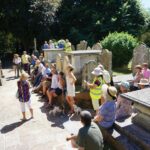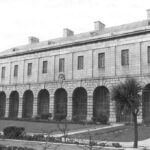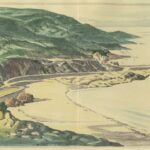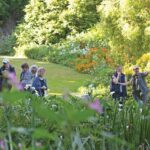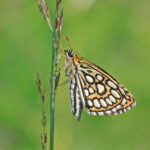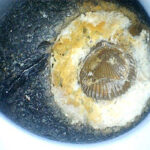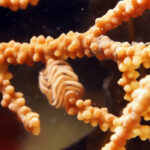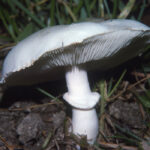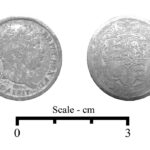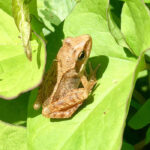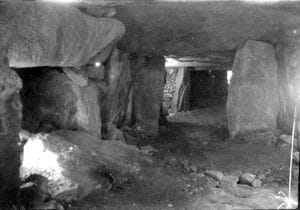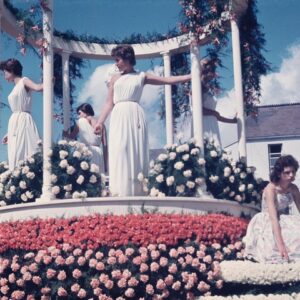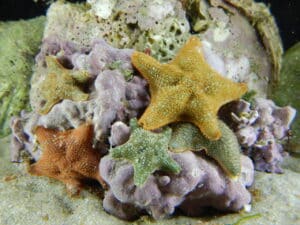Our England is a garden that is full of stately views,
– ‘The Glory of the Garden’ by Rudyard Kipling
Of borders, beds and shrubberies and lawns and avenues,
With statues on the terraces and peacocks strutting by;
But the Glory of the Garden lies in more than meets the eye
Whether it’s noticing buds that have opened into flowers, watching birds and bees fluttering around a green oasis or stopping to smell the roses, gardens bring a lot of enjoyment in the present moment – blink and you’ll miss it. And those are just the gardens that still exist in the island… but what about gardens of times gone by?
To most people, the gardens of yesteryear may have never crossed your mind, but that’s not the case for the members of the Société’s Garden History Section. Founded in 1987 by two prominent Jersey botanists, the late Frances Le Sueur and Margaret Long, the section seeks to research gardens and plant varieties throughout the Island’s history through to the present day.

More recently, the work that was begun by these two gardening enthusiasts has been taken up by the current members of the section and the Section Chair Pat Jackson. For this blog, Pat shared her most recent report of the activities of the section.
In this report, Pat explains that “together with an enthusiastic team, Frances and Margaret led the research which culminated in the publication of a book: ‘The Glory of the Garden!’, the title being taken from Rudyard Kipling’s poem of the same name.”
Although this poem ends with the line, ‘And the Glory of the Garden it shall never pass away!’, unfortunately this has not been the case for the fate of some local gardens which featured in the book published by Frances and Margaret. Pat recounts that many of them “have been lost to development or marked changes have been made by new owners. No garden designs remain static; plants are ephemeral, and changes have been made to reflect new owners’ needs, finances, commitment etc.
“The JAYF Open Gardens scheme gave access to large, beautiful gardens which allowed them to be photographed and notes made; all this data is stored by the section. In 1977, the JAYF list contained 24 gardens, however, some were opened twice i.e., in the spring and late summer. Today, the JAYF list offers six gardens.”

Perhaps then, Garden History, a means of recording and preserving the Island’s gardens has never been more important. But what exactly does this Section’s work consist of?
From Pat’s report, it emerges that Garden History is used as a tool for a number of vital undertakings when it comes to local plants and gardens. For example, Garden History is key when it comes to the historically accurate restoration of gardens surrounding heritage sites. This has been put into practice locally at The Georgian House, 16 New Street and Hamptonne’s herb and vegetable garden.
Writing about this in her report, Pat explains the central considerations when carrying out this kind of restoration at sites of this kind: “The garden design should mirror the age of the buildings; and plants should be age appropriate. The plants are considered – their origin and how they arrived here – and this includes Jersey ‘specialities’ such as local apple and pear cultivars. This means researching the plant hunters and their amazing stories; also, the nurserymen who constantly imported new varieties; innovations in horticultural equipment, the experts such as Samuel Curtis, Sir John Le Couteur [and] the Hellyers, people who researched and shared their knowledge, thereby inspiring fellow horticulturalists.”
I sat down with Pat to find out more about garden history and her report where she elaborated on these two roles. She explained that plant hunters were individuals who would scour the globe for botanical specimens to bring back to their home shores.
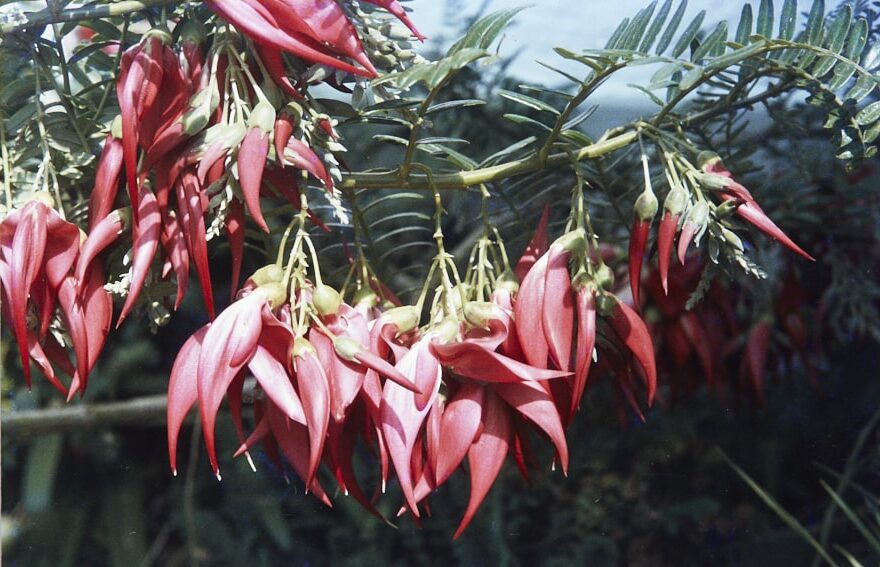
Pat said: “From Biblical times and probably before, plants and seeds moved westwards mainly from the Middle East, and then from times of exploration around the world, dating from perhaps the 15th century, plant hunters have collected material specifically to meet the needs of an acquisitive public as well as furthering commercial opportunities by introducing food crops.”
She added that, because “Holland, Germany, Belgium and France were areas of botanical research and plant propagation and plant dispersal, it would seem probable that with Jersey’s proximity to France and with the movement of people between the two countries, that plant material found its way to Jersey.”
As for nurserymen, Pat spoke a little about this vocation as it relates to Jersey. She explained, “It would seem that the earliest commercial plant nursery in Jersey was set up by Bernard Saunders and [was] functional by 1816. There were other nurserymen in Jersey from shortly after this, all of whom were importing and propagating plants, particularly fruit trees.
“Simultaneously, there were growers who were exporting crops to Britain and there is record of a man in the 18th century sending trees: these could have been to supplement a large English nursery order or perhaps to help replace trees used in the shipbuilding industry. Man has cultivated vines for a very long time and in the early 1800s some Jersey enterprises were focusing on viticulture.”
When so many local gardens are now no longer, and – as Pat states in her recent report – that the records of “old planting and design plans” were not kept by Planning, Garden History as a field of study is often confronted with the lack of records.
When asked how the Section manages this challenge, Pat explained: “Records of garden history in Jersey are scanty and small pieces of information are found in old diaries, early newspapers and very early tourist guides etc. The reports of the Royal Jersey Agricultural and Horticultural Society reflect flowering plants, fruit and vegetables grown and exhibited for shows from 1833. These also give occasional reports of garden visits (where gardens were competing and were judged). These reports listed popular plants, some garden design, gardeners and property owners. Jersey Archive holds valuable material as does the Société Jersiaise library.”
Speaking on the significance of preserving our connection to Garden History, Pat said: “If no one records the past developed landscape, an integral part of social history is lost.”
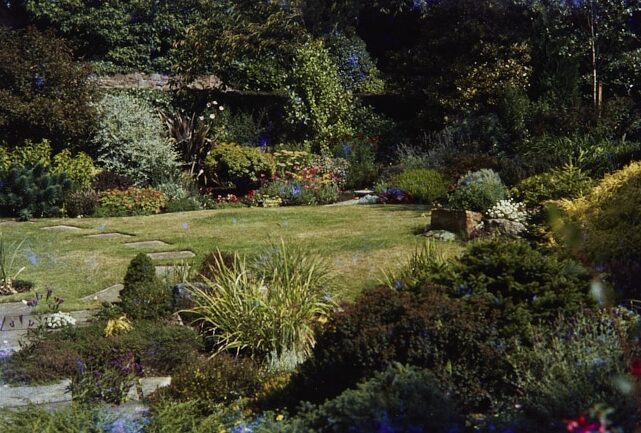
In terms of her own connection with gardens and gardening, Pat’s started in her own family. She remarked: “There were some very knowledgeable women gardeners in my family, from whom my abiding interest in plants evolved. To learn where the familiar plants came from adds to the enjoyment!”
As for her favourite gardens in the island, Pat said: “The garden of the late Celia Skinner was particularly good as the design and planting in garden rooms was so impressive and well-chosen. However, at present, the Mediterranean garden at Trinity Manor is exceptional. The planting evokes a quiet, somnolent ambience by using a mix of pale colours. The greys and blues, set in a structured design with light-coloured hard landscaping, achieve a languid, Mediterranean atmosphere.”
So, what research projects are currently burgeoning within the Garden History Section? As well as discovering more about the Island’s plant nurseries, recording details of public parks in Jersey, assessing plants in local cemeteries and at allotments, Pat writes in her report that “A further research project could be to record the remarkable women gardeners of Jersey. There is still so much to discover!”
Expanding on this topic, Pat said: “There have been many very knowledgeable lady gardeners in Jersey over the past years, but it appears impossible to know of any much earlier than 1800. No one specific record seems to list the gardens these ladies have created. It is impossible at this stage to say who might be included in this research, but perhaps before anybody with in-depth knowledge of them dies, it would be an interesting project to work on.”
The Garden History Section usually meet on the 2nd Thursday of each month at 2.30pm at different locations. To find out more about the Section and to get involved in their work, click here.
Written by Martha Macdonald
